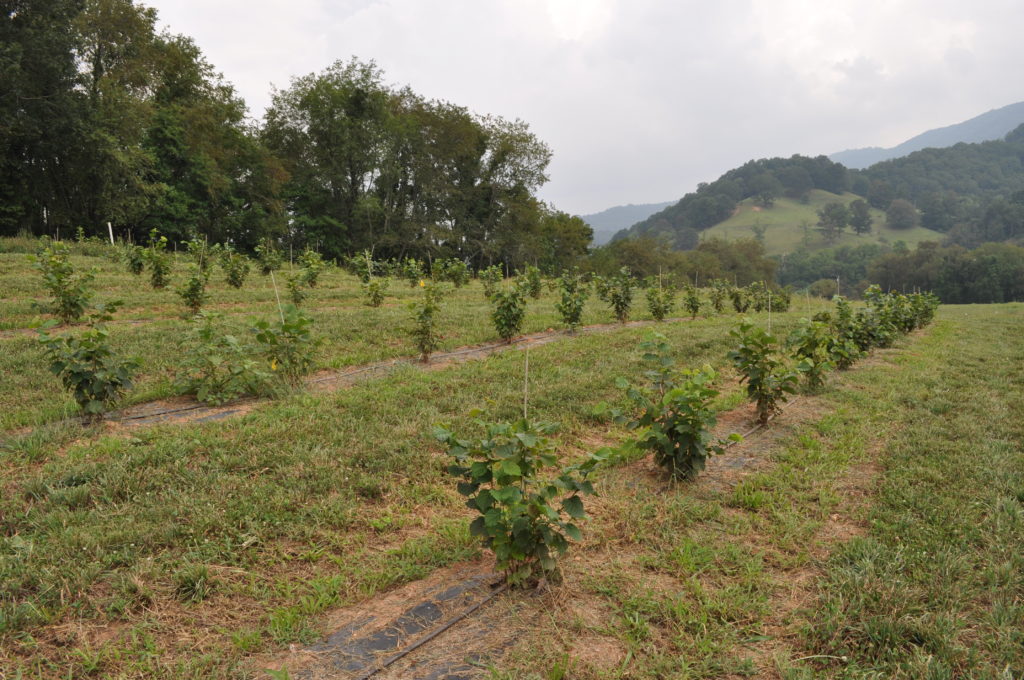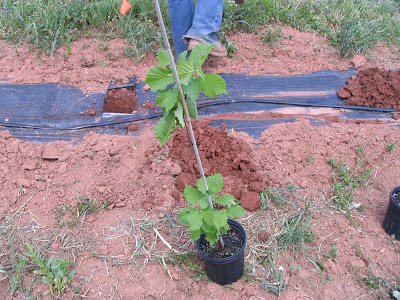The Day We Planted Our Truffle Orchard
go.ncsu.edu/readext?466722
en Español / em Português
El inglés es el idioma de control de esta página. En la medida en que haya algún conflicto entre la traducción al inglés y la traducción, el inglés prevalece.
Al hacer clic en el enlace de traducción se activa un servicio de traducción gratuito para convertir la página al español. Al igual que con cualquier traducción por Internet, la conversión no es sensible al contexto y puede que no traduzca el texto en su significado original. NC State Extension no garantiza la exactitud del texto traducido. Por favor, tenga en cuenta que algunas aplicaciones y/o servicios pueden no funcionar como se espera cuando se traducen.
Português
Inglês é o idioma de controle desta página. Na medida que haja algum conflito entre o texto original em Inglês e a tradução, o Inglês prevalece.
Ao clicar no link de tradução, um serviço gratuito de tradução será ativado para converter a página para o Português. Como em qualquer tradução pela internet, a conversão não é sensivel ao contexto e pode não ocorrer a tradução para o significado orginal. O serviço de Extensão da Carolina do Norte (NC State Extension) não garante a exatidão do texto traduzido. Por favor, observe que algumas funções ou serviços podem não funcionar como esperado após a tradução.
English
English is the controlling language of this page. To the extent there is any conflict between the English text and the translation, English controls.
Clicking on the translation link activates a free translation service to convert the page to Spanish. As with any Internet translation, the conversion is not context-sensitive and may not translate the text to its original meaning. NC State Extension does not guarantee the accuracy of the translated text. Please note that some applications and/or services may not function as expected when translated.
Collapse ▲
Our truffle orchard during its first growing season in August 2010.
9/20/2022 – Look for all the updates on our truffle orchards, our research, and what’s happening with this new and emerging agricultural industry. We have been harvesting truffles from the orchard described below since 2017 and tried a number of new cultural practices in 2021.
4/15/2010 – Last spring Garland Truffles donated trees to my program to establish a test & demonstration truffle orchard at the Mountain Research Station in Waynesville, NC. The trees are filberts inoculated with the black Perigord truffle fungus. As you may recall, it rained a lot last spring and the soil never dried out enough to work it. So we potted up the little trees and held them for a fall planting. Same thing happened; it just kept raining. So we put the trees in an overwintering structure and held them till spring. Now finally, almost one year later, we have planted our little truffle trees. And they look great.
We don’t have any research arranged for this small orchard yet. Right now it is a learning tool for us and a demonstration orchard to teach people what a truffle orchard is all about. We are looking for funding to conduct research studies on a wide variety of issues including disease management of the filbert trees, testing for the presence and extent of colonization of the fungi in the soil, and fertility management.
For more information on truffles and how to grow them, here are a few sites to visit:
- Garland Truffles. This is a North Carolina company. They sell inoculated seedlings and have lots of information on their website about growing and marketing truffles. They donated the trees for this project.
- New World Truffieres. This is a company in Oregon. They also sell truffle inoculated trees and have an informative website.
- The North American Truffle Growers Association. They hold winter and summer meetings where truffle growers and experts get together to share information.
- A few years ago, I would have listed the websites of several growers who are successfully growing truffles, but there are enough of them now that I’m afraid if I make a list I might miss someone and they’ll get upset. So, I’m going to leave it to you to find some of these successful growers and read about their businesses. Just do an internet search on, for example, “truffles North Carolina” or “truffles Tennessee” or “truffle production”. You will also find good information from Australia and Europe.
- Just be careful that you get your information and inoculated trees from reliable sources. Beware of websites selling truffle trees or services that do not include a name, address, or phone number. Putting in a truffle orchard is an investment. Before you buy trees from someone, you should be able to ask them lots of questions, talk to people who have purchased their trees, see real evidence that their trees can produce, and visit the nursery if you want to. Okay, I’ll get off my soapbox now.

Reviewed and updated by Jeanine Davis, NC Alternative Crops & Organics Program, Department of Horticultural Science, NC State University. 3/7/2022.


